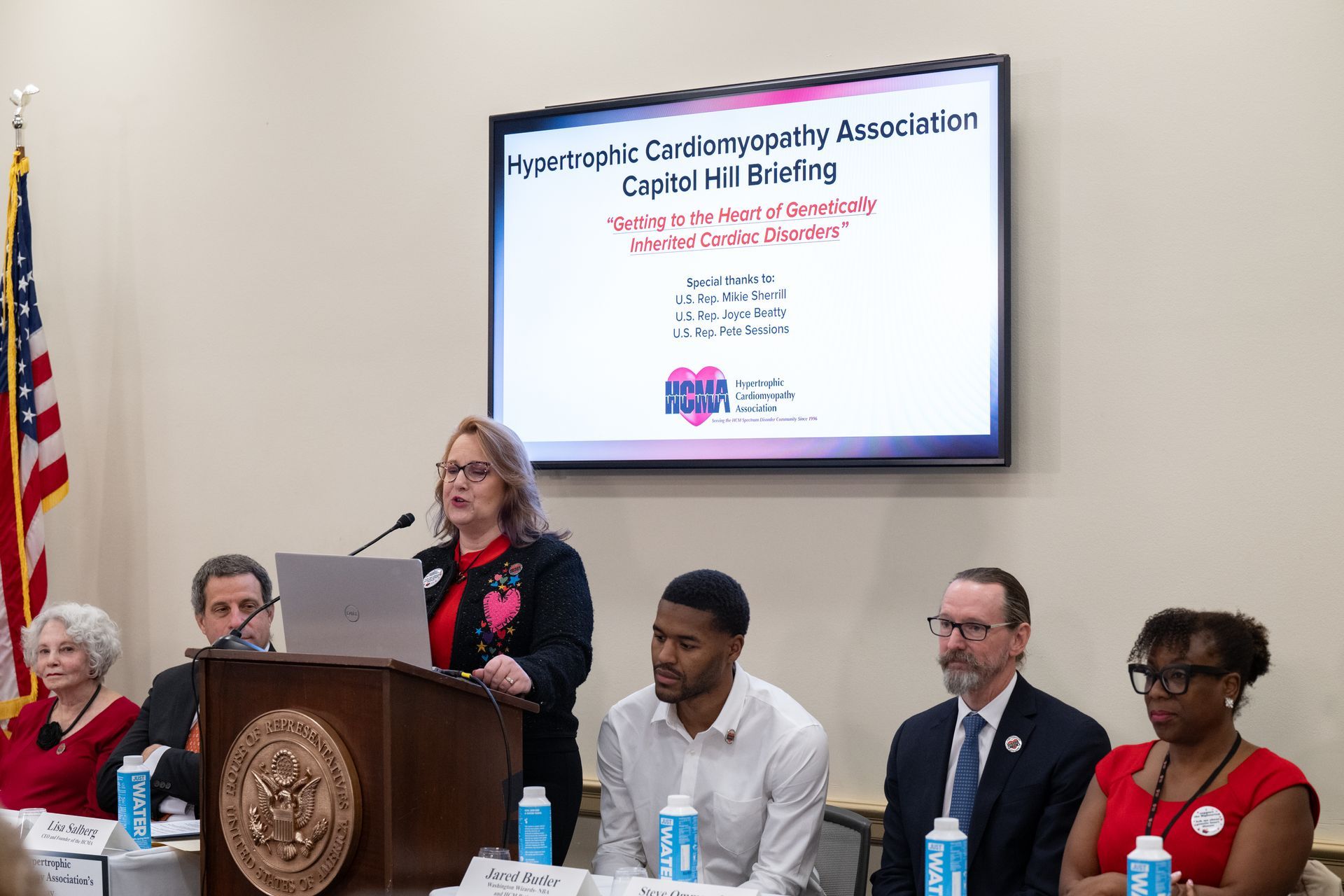PRKAG2 Syndrome
When energy sensing goes awry
What is PRKAG2 Syndrome?
PRKAG2 Syndrome is very rare. About 1 of 100 "HCM" cases is caused by PRKAG2 Syndrome. Up to 70% of those with PRKAG2 have heart disease. It affects other body parts, such as the brain, liver, kidneys, pancreas, and muscles. The name is based on the gene that causes this syndrome.

PRKAG2 Syndrome (PS) is a rare genetic glycogen storage disease. Signs of this syndrome include thickened heart muscle, heart block, and heart failure. Abnormal heartbeats (arrhythmias) in PS are often dangerous and can lead to death.
What Causes PRKAG2 Syndrome?
A mutation in the PRKAG2 gene, which codes for an enzyme called AMPK, causes PRKAG2 Syndrome. AMPK is important for energy storage in body cells. Energy storage problems cause damage to the body. Some affected parts are the heart, muscles, brain, liver, kidneys, and pancreas. When PS patients become pregnant, the placenta may be abnormal. PS is considered an autosomal dominant genetic condition. That means you only need one mutated gene from one parent to develop the disease.
How is PRKAG2 Syndrome like HCM?
Left ventricular hypertrophy (LVH) is common in PS. This, along with left ventricular outflow tract obstruction (LVOTO), looks like HCM. PS and HCM also have arrhythmias and the possibility of sudden cardiac arrest in common. Advanced cases of PS and HCM may both show a dilated form of cardiomyopathy. Dilation can lead to heart failure and, rarely, the need for a heart transplant.
How is the heart monitored in PS?
EKG/ECG and Holter or Ambulatory Monitor
Regular EKG is important in PS to watch for abnormal heart rhythms. Some of these arrhythmias can be dangerous. Common rhythms include left or right bundle branch block and complete heart block. The heart rate may be too fast or too slow. Your doctor can explain what any abnormal EKG readings mean for you.
EKG is recommended at least once a year for PS patients. Atrial fibrillation (AFIB) and atrial flutter, are common in PS. Ambulatory Monitoring should also be done to detect dangerous rhythms over a 48-hour to 2-week period.
Electrophysiology Testing
EP testing is important to see if there are extra electrical pathways in the heart. If so, they may be treated with an ablation procedure.
Echocardiogram
An echocardiogram is recommended at diagnosis and every 1-2 years, depending on symptoms.
Concentric LVH is often seen on echocardiograms in PS.
CPET/VO2Max
An exercise stress test, including oxygen use, should be done to see if there are any issues with exercise. This includes dangerous arrhythmias during exercise. Chronotropic incompetence is common in PS. This means the heart rate doesn't increase as it should during exercise or stress.
BNP Test
BNP (a blood test for heart failure) should be tested early. It should be repeated at least once a year to track the progress of heart failure.
Genetic testing, family history, and family screening
PS should be confirmed by genetic testing. Many clues also come up in the family history, especially a history of sudden death. Because PS is passed down in families, family members of a patient should be screened. It's important to have genetic counseling before having children in PS families. Carriers of PS may be advised to avoid pregnancy or use IVF to implant only embryos without the mutation.
When do symptoms start in PS?
Signs and symptoms of PS can begin at any time from before birth into the 40s. The average age of diagnosis is about 30.
Symptoms in PS
Symptoms of PS include heart problems, high blood pressure at an early age, and fainting. Also, muscle weakness, muscle pain, and epilepsy.
Abnormal Heart Rhythms
Up to half of PS patients need an implanted pacemaker due to heart block and sinus node arrhythmias. Sudden cardiac arrest (SCA) is a danger, with up to 9% of patients dying from it. SCA can happen because a heart block develops quickly. Patients with LVH over 3 cm or a history of dangerous arrhythmias need an ICD to prevent sudden death. Dangerous arrhythmias include ventricular tachycardia (VT) and ventricular fibrillation (VF). Wolff-Parkinson-White syndrome is a common arrhythmia in PS patients with LVH.
Medical Management
Common medications used in PS are antiarrhythmics, blood thinners, and diuretics. Antiarrhythmics help control abnormal heart rhythms. Blood thinners (anticoagulants) help prevent blood clots. Diuretics or "water pills" help remove extra water from the body in heart failure.
Heart Failure Treatment
Standard heart failure treatment is used in PS. Water must be carefully balanced to avoid making obstruction or heart failure worse. Dehydration is very bad for those with obstruction. Too much fluid can make congestive heart failure (CHF) symptoms worse.
Transplant
For those who reach end-stage heart failure, transplantation is an option. It should be considered early when the patient is still healthy enough.
Citations:
Clinical Spectrum of PRKAG2 Syndrome.
Circulation: Arrhythmia and Electrophysiology 2016, Jan, 9(4).
PRKAG2 syndrome, a rare hypertrophic cardiomyopathy: a Brazilian long-term follow-up with extracardiac disorders.
Einstein (Sao Paulo). 2024 Jul 10;22:eAO0549.

 Translate
Translate